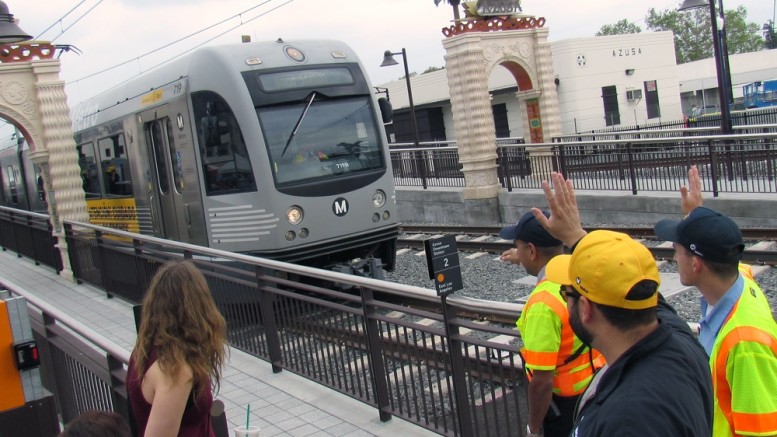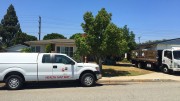Glendora Mayor Pro Tem Gene Murabito and Duarte Council member John Fasana issued a response to a commentary critical of driving forces behind the Gold Line Foothill Extension’s construction.
In the Los Angeles Times commentary, writer Ethan Elkind, Associate Director of the Climate Change and Business Program at UC Berkeley/UCLA Schools of Law, speaks about how political machinations dictate how and where Metro builds. He goes on to say that the low-density makeup of the San Gabriel Valley does not have the population to support “expensive rail technology.
“In some ways, the Gold Line extension is the price we all had to pay to secure funding for more cost-effective rail lines in densely populated parts of the county, which are now under construction,” Elkinds contends.
Murabito and Fasana issued a letter to the Times in response to Elkind:
Like his book, Ethan Elkind’s recent Opinion (“How politics built L.A.’s Gold Line at the expense of a smarter system,” March 14) turns a blind eye to many facts due to his parochial view of the county’s transportation problems and, more importantly, the solutions. While ignoring the benefits the Foothill Gold Line brings to the region, he conveniently misses several important points.
First, the cost per mile to build the Foothill Gold Line is only one-third the cost of other lines being built through more densely populated areas. The recently completed 11.5-mile Foothill Gold Line from Pasadena to Azusa cost $741 million to build, including six new stations and 1,525 parking spaces. By comparison, a 6.5-mile light rail line being built through densely populated areas on the west side of Los Angeles costs $1.5 billion. That is a $163 million per mile (and nearly $91 million per station) difference.
Second, ridership on the Foothill Gold Line is equivalent to the ridership of other light rail lines in the county – 64,000 daily boardings by 2030 for the west side project for instance, versus 60,000 daily boardings by 2035 for the Gold Line (not including the future planned extension of the Foothill Gold Line from Glendora to Montclair).And finally, smart growth planning principles support building public infrastructure in areas expected to accommodate future growth. The Foothill Gold Line is being built along a historic freight corridor undergoing an evolution from agricultural driven, light manufacturing uses to higher density housing and commercial uses appropriate for the new passenger service. These new uses will accommodate the expected growth of more than 50,000 new residents and 15,000 new jobs projected for the Foothill Gold Line corridor cities in the next decade, and more in the decades to come. In fact, the Foothill Gold Line corridor is expected to represent 44% of the total population and 49% of the total jobs in the San Gabriel Valley by 2024; not including the tens of thousands of students and visitors that travel to and from the many universities located within walking distance to a Foothill Gold Line station.
So while there are certainly important benefits to shoe-horn transit infrastructure into densely populated areas of the county; there are also benefits to building it through areas able to help accommodate the county’s growing population. Both are wise uses of taxpayer dollars; and both help improve the quality of life for our county’s residents, workers and visitors.
– John Fasana and Gene Murabito
Do you agree with Murabito’s and Fasana’s response? Comment below.







